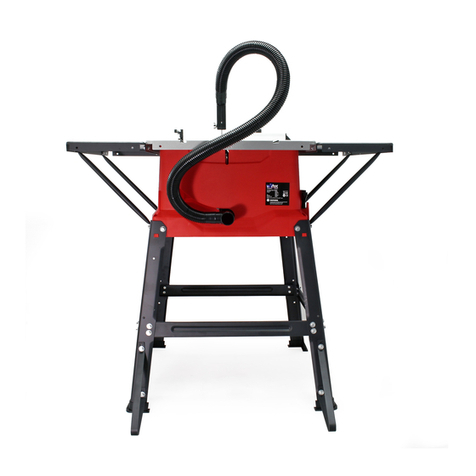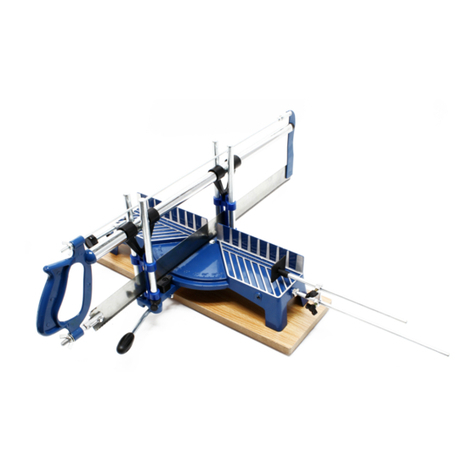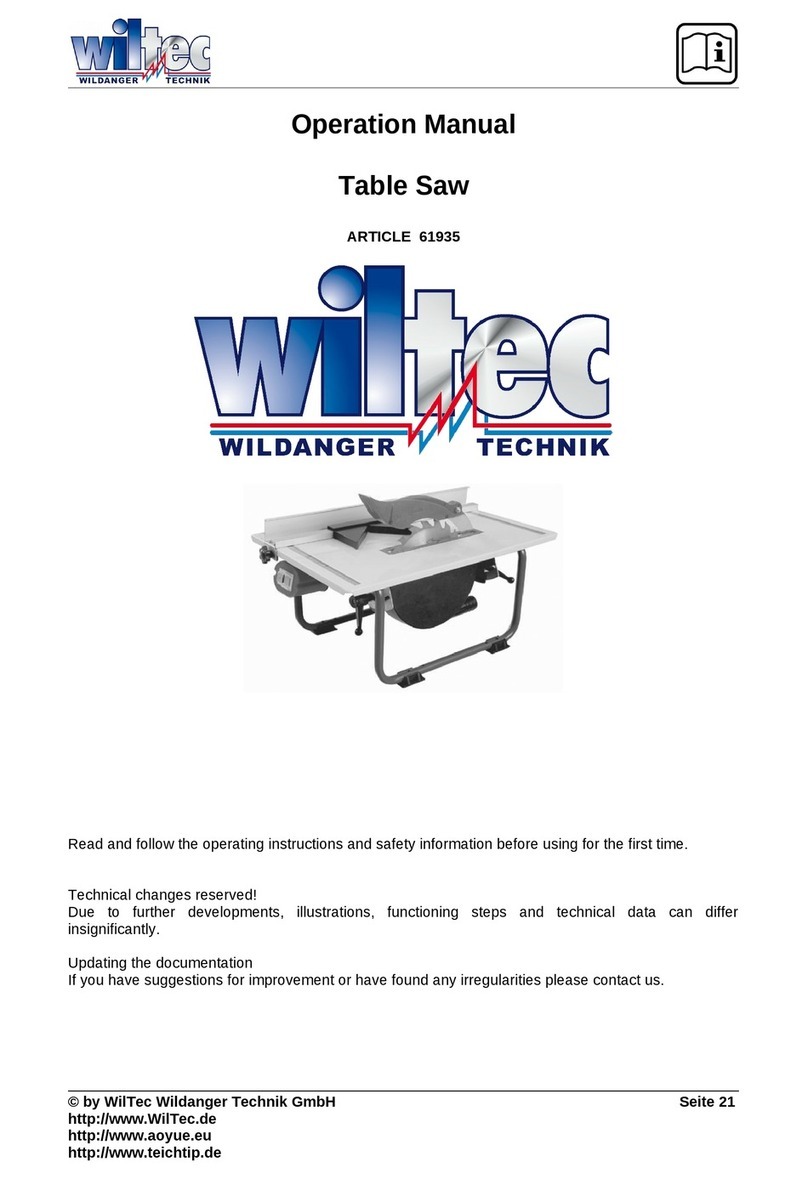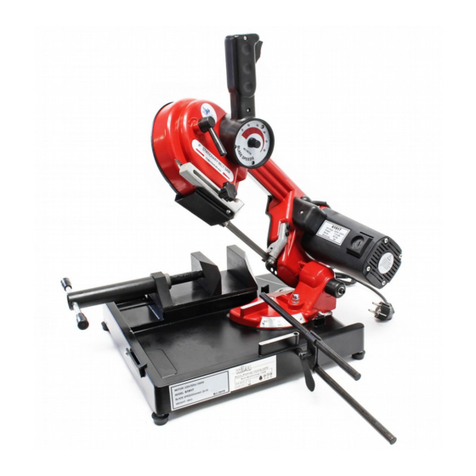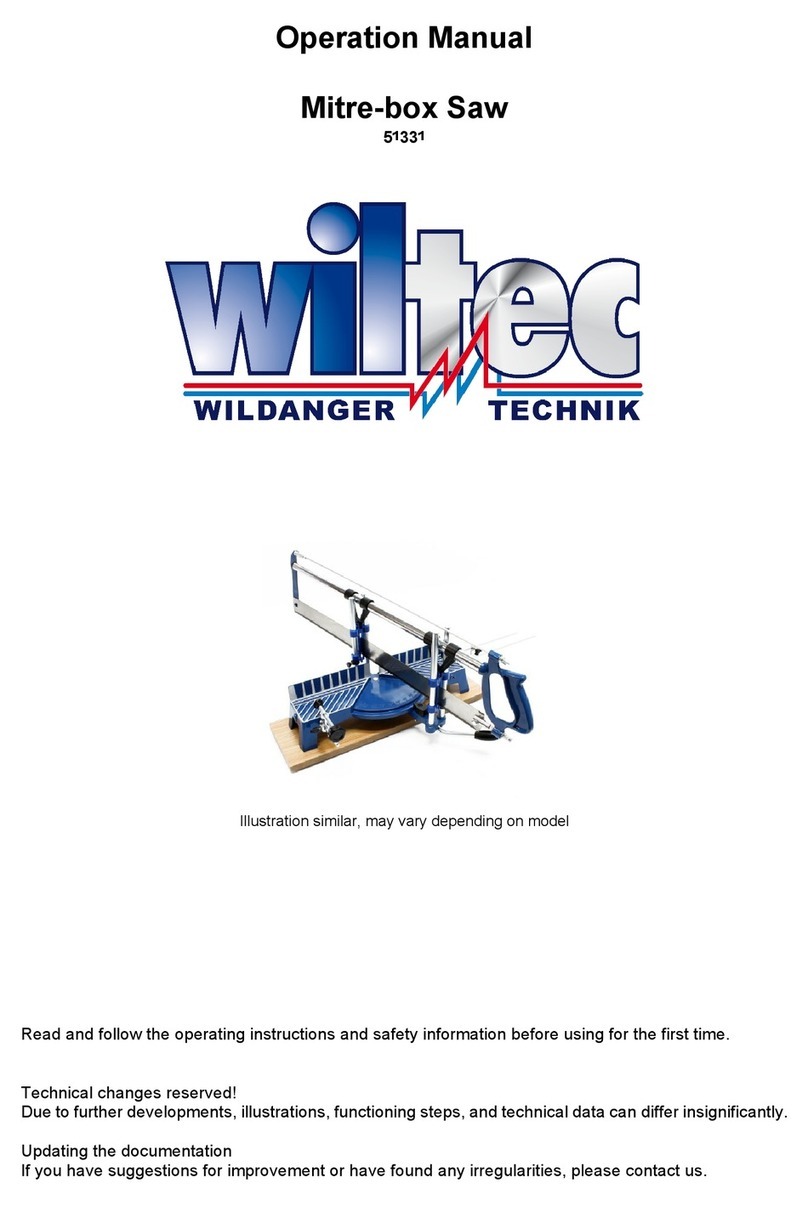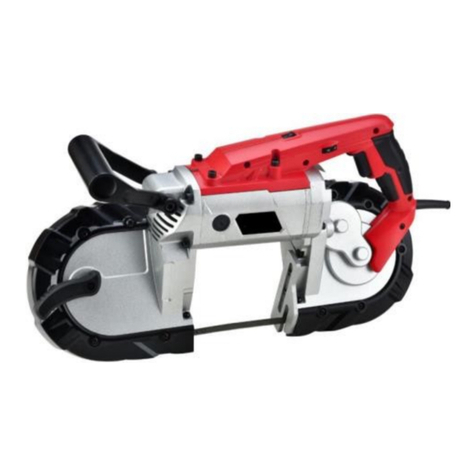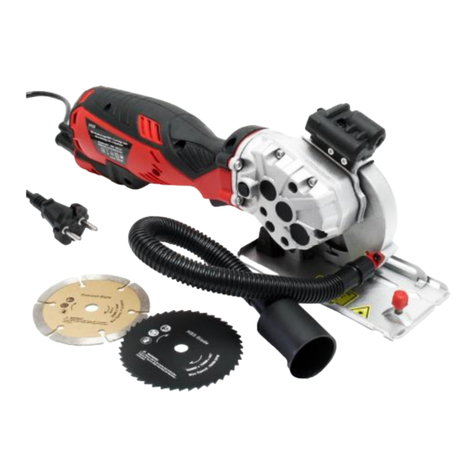© by WilTec Wildanger Technik GmbH Item 61076 Page 6
http://www.WilTec.de
http://www.aoyue.eu 06 2021-1
http://www.teichtip.de
•If the use of the electric tool in a damp room is not avoidable, use a fault-current circuit
breaker. The use of a fault-current circuit breaker decreases the risk of electric shock.
Personal safety
•Be aware and focus on what you are doing and always act responsible when working
with an electric tool. Do not use electric tools if you are tired, under the influence of
drugs, alcohol or medical substances. One moment of inattentiveness can lead to serious
injury.
•Wear personal protective gear and protective glasses at all times. Wearing a personal pro-
tective gear, such as a dust mask, slid-proof safety shoes, a protective helmet and hearing
protection, depending on the type and use of the electric tool, reduces the risk of injury.
•Avoid an accidental operation. Ensure, that the electric tool is switched off before con-
necting it to the electricity supply or carrying it. When your finger is located on the switch
whilst carrying it or the device is connected to the electricity supply, this can lead to accidents.
•Remove the adjustment tools or wrench before turning the device on. A tool or wrench,
which is located in a moving part can cause injury.
•Avoid unnatural body postures. Ensure a secure positioning and keep your balance at
all times. This allows you to handle the electric tool better in an unexpected situation.
•Wear suitable clothing. Do not wear loose clothing or jewellery. Keep hair, clothing and
gloves away from moving parts. Loose clothing, jewellery or long hair can get caught in mov-
ing parts.
•If the vacuum cleaner and collection system can be mounted, ensure that these are con-
nected and used properly. Using a vacuum cleaner can decrease the danger from dust.
Use and treatment of the electric tool
•Do not overburden the device. Solely use it for the purpose for which the device was
designed. A matching electric tool, allows the work to be carried out better and safer in the
stated power range.
•Do not use an electric tool with a broken switch. An electric tool, which can no longer be
switched on or off is dangerous and needs to be repaired.
•Pull the plug from the socket before carrying out any adjustments to the device, exchang-
ing parts or placing the device somewhere else. This measure prevents the device from
starting accidentally.
•Store unused electric tools out of reach of children. Do not let people, who are not famil-
iar with the device or have not read and understood the instructions operate this device.
Electric tools are dangerous if used by inexperienced people.
•Maintain electric tools with care. Check, whether moving parts work impeccably and do
not jam or if parts are broken or damaged, in a way that affects the function of the electric
tool. Have damaged parts repaired immediately before using the device. A lot of accidents
are cause by badly maintained electric tools.
•Keep cutting tools sharp and clean. Well maintained cutting tools with sharp blades jam less
and thus are easier to control.
•Use electric tools, equipment, insertion tool, etc. according to this instruction. Always
regard the working conditions and work needing to be carried out. The use of the electrical
tools for purposes, other than those described in this manual can lead to dangerous situations.
•Only have your tools repaired by a qualified technician with original spare parts. This
way, the safety of the tool stays maintained.
Further safety notes for reciprocating saws
•Wear a dust mask. Inhaling dust is a danger for the operator or by-standing people.
•Hold the isolated handles of the device, when carrying out work, during which the tool
can hit hidden electricity lines or the own electricity cable. Contact with a live wire can put
metal device parts under voltage and can lead to electric shock.


